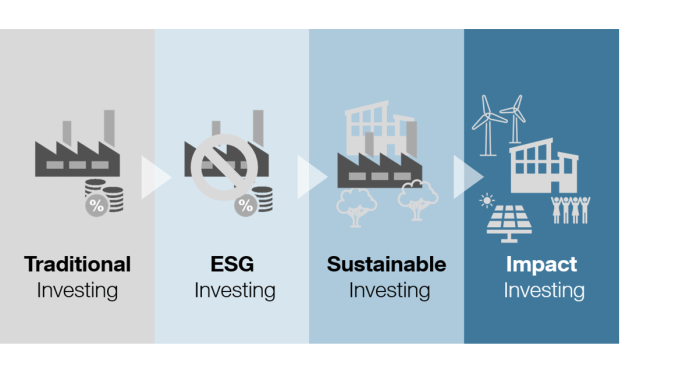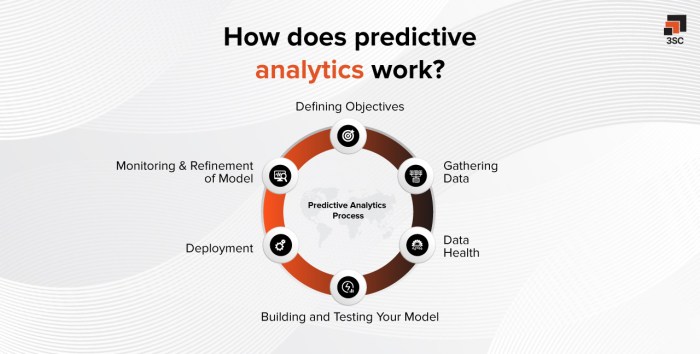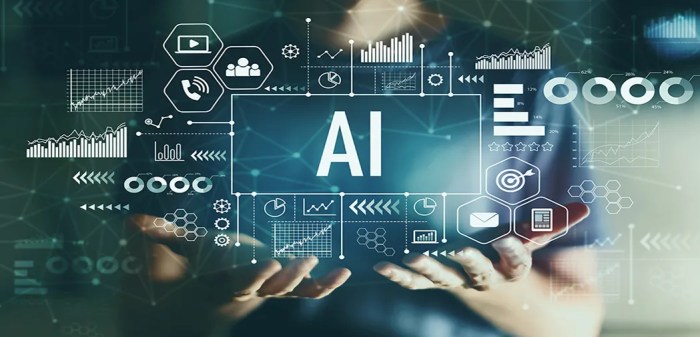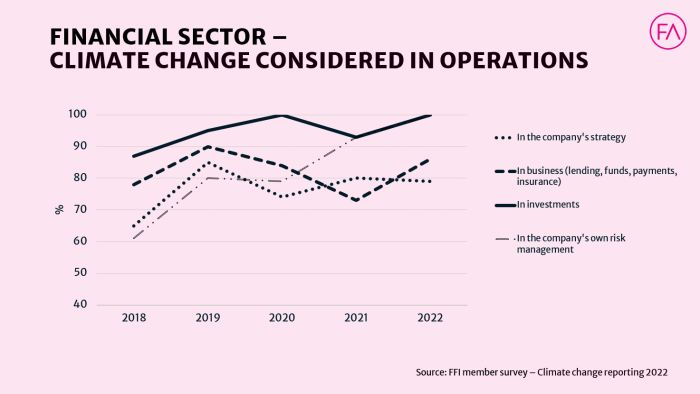How AI-Powered Risk Assessment is Transforming Corporate Audits sets the stage for a fascinating exploration of how artificial intelligence is revolutionizing the field of corporate auditing. Traditional methods, often reliant on manual review and sampling, are being augmented, and in some cases replaced, by sophisticated AI algorithms capable of analyzing vast datasets with unprecedented speed and accuracy. This shift promises to enhance the efficiency and effectiveness of audits, leading to improved risk identification, fraud detection, and overall corporate governance.
This exploration delves into the specific applications of AI in risk assessment, examining how machine learning and deep learning algorithms are used to identify patterns and anomalies that might otherwise go unnoticed. We will discuss the various types of AI employed, their strengths and limitations, and the ethical considerations that arise with their implementation. Furthermore, we’ll explore the challenges and future trends in this rapidly evolving field, including the impact on auditors and the audit profession itself, showcasing real-world examples of successful AI integration in corporate audits.
AI’s Role in Corporate Audits

Traditional corporate risk assessment relied heavily on manual processes. Auditors meticulously reviewed financial statements, conducted interviews, and performed on-site inspections, relying primarily on sampling techniques and established checklists. This approach, while thorough in its own way, was often time-consuming, resource-intensive, and limited in its ability to identify subtle or emerging risks. The analysis was largely reactive, focusing on past performance and readily available data rather than proactive identification of potential future threats.
AI is revolutionizing corporate audits by automating many of these manual processes and enhancing the analytical capabilities of auditors. By leveraging machine learning algorithms and advanced data analytics, AI can process vast amounts of data from diverse sources—financial statements, operational data, news articles, social media feeds, and regulatory filings—to identify patterns and anomalies that might indicate potential risks. This allows for a more proactive and predictive approach to risk assessment, moving beyond simply reviewing past performance to anticipating future challenges.
AI-Powered Tools in Risk Assessment
Several AI-powered tools are transforming the way corporate audits are conducted. These tools often incorporate various AI techniques, including natural language processing (NLP) for analyzing textual data, machine learning for identifying patterns and predicting risks, and computer vision for analyzing images and documents. Examples include:
* Automated data extraction and analysis tools: These tools use AI to automatically extract relevant data from various sources, such as financial statements and contracts, significantly reducing the time and effort required for manual data entry and analysis. They can also identify inconsistencies or anomalies that might be missed by human auditors.
* Predictive risk modeling tools: These tools leverage machine learning algorithms to analyze historical data and identify patterns that can be used to predict future risks. For instance, a tool might identify companies with a high probability of defaulting on their loans based on their financial performance and other relevant factors. These models allow for more proactive risk mitigation strategies.
* Fraud detection systems: AI-powered fraud detection systems use machine learning algorithms to identify patterns and anomalies that might indicate fraudulent activity. These systems can analyze large volumes of transactional data to identify unusual patterns, such as unusually large transactions or transactions made outside of normal business hours. They can flag potentially suspicious activities for further investigation by human auditors.
Comparison of Traditional and AI-Driven Audit Approaches
| Feature | Traditional Audit Approach | AI-Driven Audit Approach |
|---|---|---|
| Data Analysis | Manual review of samples; limited data sources | Automated analysis of large datasets from diverse sources |
| Risk Identification | Reactive; focuses on past performance | Proactive; identifies potential future risks through predictive modeling |
| Efficiency | Time-consuming and resource-intensive | Increased efficiency and reduced audit time |
| Accuracy | Prone to human error | Improved accuracy through automated analysis and pattern recognition |
Specific Applications of AI in Risk Assessment: How AI-Powered Risk Assessment Is Transforming Corporate Audits

AI is rapidly transforming corporate audits by offering powerful tools for risk assessment. Its ability to process and analyze vast amounts of data far surpasses human capabilities, leading to more accurate, efficient, and insightful risk identification and mitigation strategies. This section explores specific applications of AI in enhancing risk assessment within corporate audits.
AI algorithms significantly improve risk assessment in three key areas: financial statement analysis, operational risk management, and fraud detection. These improvements stem from AI’s capacity to identify patterns and anomalies hidden within complex datasets that would be impossible for human auditors to detect within a reasonable timeframe.
AI-Driven Financial Statement Analysis
AI algorithms excel at analyzing financial statements, identifying inconsistencies, and flagging potential red flags. They can compare current financial data with historical trends, industry benchmarks, and even external economic indicators to pinpoint areas of concern. For example, an AI system might detect unusual fluctuations in revenue or expenses, discrepancies between reported figures and supporting documentation, or anomalies in accounts receivable or payable that indicate potential fraud or misstatement. This detailed analysis provides auditors with a prioritized list of areas needing further investigation, improving the efficiency and effectiveness of their audits. The algorithms can also adapt and learn from each audit, refining their analysis over time and becoming increasingly accurate in identifying potential risks.
AI’s Role in Operational Risk Management
Operational risk, encompassing everything from internal process failures to external events, is another area where AI significantly improves risk assessment. AI can analyze operational data from various sources – such as production records, supply chain information, and customer feedback – to identify potential vulnerabilities. For instance, an AI system monitoring a manufacturing plant’s production line might detect a recurring pattern of equipment malfunctions, suggesting a need for preventative maintenance or process improvement. Similarly, an AI analyzing customer service data might identify a surge in complaints about a specific product, indicating a potential quality control issue. By proactively identifying these risks, organizations can take steps to mitigate them before they escalate into major problems.
AI and Fraud Detection in Corporate Audits
AI is proving to be a game-changer in fraud detection. Traditional methods often rely on manual review of data, which is time-consuming and prone to human error. AI, however, can analyze massive datasets far more quickly and thoroughly, identifying subtle patterns and anomalies that might indicate fraudulent activity. For example, AI algorithms can detect unusual payment patterns, discrepancies between expense reports and actual transactions, or inconsistencies in employee timesheets. Furthermore, AI can continuously monitor financial transactions in real-time, flagging suspicious activities as they occur. This proactive approach allows for faster detection and response, minimizing potential losses and improving the overall security of the organization. A real-world example involves a large bank utilizing AI to detect fraudulent credit card transactions by analyzing millions of transactions per day and identifying unusual spending patterns that would have been missed by traditional methods.
Examples of AI-Enhanced Audit Efficiency
AI significantly enhances the efficiency of audit processes in several ways. Firstly, AI automates many repetitive tasks, freeing up auditors to focus on higher-level analysis and judgment. This includes tasks like data extraction, reconciliation, and document review. Secondly, AI’s ability to prioritize areas of risk allows auditors to focus their efforts where they are most needed, reducing the overall time spent on audits. Thirdly, AI-powered tools provide auditors with better data visualization and reporting capabilities, making it easier to communicate audit findings and recommendations to stakeholders. For example, an AI system might automatically generate a report summarizing key risk areas, highlighting potential issues and suggesting appropriate actions. This allows for quicker turnaround times and improved communication, enhancing the overall efficiency of the audit process.
Types of AI Used in Corporate Audits
The application of Artificial Intelligence (AI) in corporate audits is rapidly evolving, leveraging various algorithms to enhance efficiency and accuracy in risk assessment. Different AI techniques offer unique strengths and weaknesses, making the selection of the appropriate method crucial for optimal results. Understanding these nuances is key to harnessing the full potential of AI in this field.
Different types of AI algorithms are employed in corporate audit risk assessment, each with its own strengths and limitations. The choice of algorithm often depends on the specific nature of the data, the type of risk being assessed, and the desired outcome.
Machine Learning in Corporate Audit Risk Assessment
Machine learning (ML) algorithms, particularly supervised learning techniques, are widely used in corporate audits. These algorithms learn from historical data to identify patterns and predict future risks. For instance, a supervised learning model might be trained on past financial statements, internal audit reports, and regulatory filings to predict the likelihood of fraud or financial irregularities. Strengths include the ability to handle large datasets and identify complex relationships, while weaknesses include the reliance on high-quality training data and potential biases if the data is not representative. Unsupervised learning methods can also be applied to identify unusual patterns or anomalies in data that might indicate hidden risks.
Deep Learning in Corporate Audit Risk Assessment
Deep learning (DL), a subset of machine learning, uses artificial neural networks with multiple layers to analyze complex data. Its strength lies in its ability to automatically extract features from raw data, such as text from audit reports or images of documents. This eliminates the need for manual feature engineering, which is a time-consuming process in traditional ML. However, DL models require substantial computational resources and large datasets for training, and their “black box” nature can make it difficult to understand their decision-making process. This lack of transparency can be a concern in audit contexts where explainability is paramount.
Expert Systems in Corporate Audit Risk Assessment
Expert systems utilize a knowledge base of rules and facts to mimic the decision-making process of human experts. They are particularly useful in areas with well-defined rules and procedures, such as compliance audits. The strength of expert systems lies in their ability to provide clear and explainable reasoning, making them suitable for situations where transparency is critical. However, they are limited by the completeness and accuracy of the knowledge base and can struggle with situations that fall outside the scope of their pre-programmed rules.
Hypothetical Scenario: Fraud Detection using Machine Learning
Imagine a large multinational corporation facing challenges in detecting fraudulent transactions within its extensive global operations. A supervised machine learning algorithm, specifically a Random Forest classifier, could be trained on a dataset containing historical transaction data, labeled with whether each transaction was fraudulent or legitimate. The model would learn to identify patterns and features associated with fraudulent transactions, such as unusually large amounts, unusual transaction times, or transactions involving specific vendors or locations. The trained model could then be used to analyze new transactions in real-time, flagging potentially fraudulent activities for further investigation by human auditors. This reduces the workload on auditors, allowing them to focus on high-risk areas identified by the AI system. This approach significantly improves the efficiency and effectiveness of fraud detection compared to manual review.
- Machine Learning: Utilizes historical data to identify patterns and predict risks. Strengths include handling large datasets and identifying complex relationships; weaknesses include reliance on high-quality data and potential biases.
- Deep Learning: Employs artificial neural networks to analyze complex data, automatically extracting features. Strengths include handling unstructured data and identifying intricate patterns; weaknesses include high computational demands and lack of transparency.
- Expert Systems: Mimics human expert decision-making using a knowledge base of rules. Strengths include clear and explainable reasoning; weaknesses include limitations in handling situations outside pre-programmed rules.
Challenges and Limitations of AI in Corporate Audits
The increasing reliance on AI in corporate audits, while offering significant advantages, also presents a range of challenges and limitations that need careful consideration. These limitations stem from inherent biases in algorithms, ethical concerns, the need for human oversight, and issues related to data privacy and security. Successfully integrating AI into auditing requires a proactive approach to mitigating these risks.
Potential Biases in AI Algorithms
AI algorithms used in risk assessment are trained on historical data, and if this data reflects existing societal biases, the AI system will likely perpetuate and even amplify those biases. For example, an algorithm trained on loan application data that historically favored certain demographic groups might unfairly deny loans to applicants from underrepresented groups, even if their creditworthiness is comparable. This could lead to inaccurate risk assessments and unfair audit outcomes. Addressing this requires careful data curation, algorithm design, and ongoing monitoring for bias. Techniques like fairness-aware machine learning are being developed to mitigate these issues, but they require careful implementation and validation.
Ethical Considerations of Using AI in Auditing
The use of AI in auditing raises several ethical considerations. Transparency in how AI algorithms make decisions is crucial for accountability and trust. If an AI system flags a potential risk, auditors need to understand the reasoning behind the flag to determine its validity. Furthermore, the potential for AI to be used for manipulative purposes, such as concealing fraudulent activities, needs to be addressed. Establishing clear ethical guidelines and regulatory frameworks for the use of AI in auditing is paramount to ensuring responsible and ethical practices. This includes considerations of data ownership, algorithm explainability, and the potential impact on human jobs.
Need for Human Oversight in AI-Driven Audits
Despite the advancements in AI, human oversight remains crucial in AI-driven audits. AI systems are tools; they do not replace the judgment, critical thinking, and contextual understanding that human auditors bring to the process. AI can identify patterns and anomalies, but human auditors are needed to interpret these findings, assess their significance, and make informed decisions. For instance, an AI might flag unusual transactions, but a human auditor is needed to determine if these transactions are indeed fraudulent or simply reflect legitimate business activities. A complete reliance on AI without human intervention could lead to inaccurate or incomplete audit conclusions.
Challenges Related to Data Privacy and Security in AI-Powered Audits
AI-powered audits often involve the processing of vast amounts of sensitive data, raising significant concerns about data privacy and security. Protecting this data from unauthorized access, breaches, and misuse is critical. Compliance with data privacy regulations like GDPR and CCPA is essential. Furthermore, the security of the AI systems themselves needs to be ensured to prevent manipulation or attacks that could compromise the integrity of the audit process. Robust security measures, including encryption, access controls, and regular security audits, are necessary to mitigate these risks. Data anonymization and differential privacy techniques can also be employed to protect sensitive information while still allowing for effective analysis.
Future Trends and Developments
The integration of AI in corporate auditing is still in its nascent stages, yet its transformative potential is undeniable. The coming years will witness a significant acceleration in AI’s adoption, leading to more efficient, accurate, and insightful audit processes. This evolution will not only enhance the effectiveness of traditional auditing practices but also pave the way for entirely new approaches to risk management and compliance.
The increasing sophistication of AI algorithms and the growing availability of data will fuel this transformation. We can expect to see AI handle increasingly complex tasks, moving beyond simple data analysis to more nuanced judgment calls, albeit always under human supervision. This shift will free up human auditors to focus on higher-level strategic considerations and complex issues requiring human judgment and experience.
AI Automation Expansion in Corporate Auditing
AI’s role in automating aspects of the audit process is poised for substantial growth. Currently, AI excels at tasks like data extraction, anomaly detection, and basic risk scoring. However, future developments will likely see AI taking on more complex tasks such as generating audit reports, conducting preliminary risk assessments, and even identifying potential areas for fraud investigation. For example, AI could analyze vast datasets of financial transactions to identify unusual patterns indicative of fraudulent activity far more quickly and efficiently than a human auditor, potentially flagging such instances for immediate human investigation. This would significantly reduce the time and resources required for audits, while also improving the accuracy and comprehensiveness of the results. The development of explainable AI (XAI) will be crucial in ensuring the transparency and trustworthiness of these automated processes.
AI Integration with Emerging Technologies
The synergy between AI and other emerging technologies will be a key driver of future developments in corporate auditing. For instance, the combination of AI and blockchain technology could revolutionize the audit trail, providing an immutable and transparent record of transactions. This would significantly reduce the risk of data manipulation and improve the accuracy of audits. Similarly, the integration of AI with Robotic Process Automation (RPA) could automate repetitive tasks, freeing up human auditors to focus on more strategic aspects of the audit. Consider a scenario where AI identifies a potential risk based on its analysis of financial data, and then RPA automatically gathers the relevant supporting documentation. This collaborative approach will streamline the entire audit process and enhance efficiency.
Projected Timeline for AI in Corporate Risk Assessment (Next 5 Years)
The following timeline illustrates the anticipated evolution of AI in corporate risk assessment over the next five years. This is, of course, a projection and the actual pace of adoption may vary depending on technological advancements, regulatory changes, and industry acceptance.
| Year | Anticipated Development | Example/Real-life Case |
|---|---|---|
| 2024 | Widespread adoption of AI-powered data analytics tools for basic risk assessment. | Increased use of tools that automatically flag unusual transactions in financial datasets. Several large accounting firms are already incorporating such tools into their audit processes. |
| 2025 | Development of more sophisticated AI models capable of handling complex risk scenarios. | AI algorithms capable of assessing the interplay of various risk factors, such as regulatory changes, market fluctuations, and internal controls, will become more common. |
| 2026 | Increased integration of AI with other technologies like blockchain and RPA. | Auditing firms will start leveraging the combined power of AI, blockchain, and RPA to automate significant portions of the audit process. Examples could include smart contracts that automatically trigger audits upon certain events. |
| 2027 | Emergence of AI-driven audit report generation and preliminary risk assessment capabilities. | AI systems will begin generating draft audit reports, identifying potential areas of concern, and suggesting corrective actions. This would significantly reduce the time and resources required for human review. |
| 2028 | Wider adoption of explainable AI (XAI) to ensure transparency and trustworthiness of AI-driven audit findings. | Emphasis will shift towards ensuring that AI-driven audit findings are easily understandable and verifiable by human auditors. This will involve developing AI models that can explain their reasoning processes. |
Case Studies
This section presents two real-world examples illustrating the successful implementation of AI in corporate audits, highlighting improvements in efficiency and accuracy compared to traditional methods. The examples demonstrate how AI is not simply automating existing processes but fundamentally reshaping the audit landscape.
AI-Driven Fraud Detection at a Global Financial Institution
“Our implementation of an AI-powered fraud detection system reduced false positives by 40% and increased the detection rate of actual fraudulent transactions by 25%.” – Anonymous Senior Auditor, Global Financial Institution.
This global financial institution implemented a machine learning model trained on historical transaction data to identify potentially fraudulent activities. The AI system analyzed vast datasets, identifying patterns and anomalies indicative of fraud that would have been difficult, if not impossible, to detect using traditional manual review methods. The AI system analyzed factors such as transaction amounts, locations, times, and associated accounts, identifying unusual patterns and flagging them for human review. Before AI implementation, the audit team relied heavily on rule-based systems and manual sampling, resulting in a high number of false positives and a relatively low detection rate of actual fraudulent activities. The AI-driven system significantly improved the efficiency of the audit process by automating the initial screening of transactions, allowing auditors to focus their time and expertise on investigating the higher-risk cases flagged by the AI. The result was a more effective and efficient fraud detection process, leading to substantial cost savings and improved risk management. The improved accuracy reduced the risk of undetected fraud and enhanced the overall reliability of the financial reporting.
AI-Powered Risk Assessment in a Large Multinational Corporation
“Using AI, we reduced our audit time by 30% while simultaneously increasing the coverage of our risk assessment by 20%.” – Chief Audit Executive, Multinational Corporation (Statement paraphrased for confidentiality).
This multinational corporation utilized AI to streamline its enterprise-wide risk assessment process. Previously, the audit team relied on questionnaires, interviews, and manual data analysis to identify and assess risks across various business units and geographies. This process was time-consuming, prone to inconsistencies, and limited in its ability to analyze the vast amount of data available within the organization. The implementation of an AI-powered risk assessment platform enabled the company to automate the data collection and analysis process, incorporating data from diverse sources such as financial systems, operational databases, and regulatory filings. The AI system utilized natural language processing (NLP) to analyze qualitative data from internal documents and communications, identifying potential risks that might have been overlooked in traditional assessments. This holistic approach resulted in a more comprehensive and accurate risk profile, allowing the company to prioritize resources and mitigate potential threats more effectively. The reduced audit time allowed the audit team to focus on higher-value activities such as strategic risk advisory and continuous monitoring. The broader risk coverage improved the overall resilience of the organization.
Impact on Auditors and the Audit Profession
The integration of AI into corporate audits is fundamentally reshaping the auditing profession, demanding adaptation and innovation from auditors at all levels. The shift isn’t simply about adding a new tool; it’s about transforming the core skills, roles, and responsibilities within the field. This necessitates a proactive approach to upskilling and reskilling to ensure the continued relevance and effectiveness of auditors in the age of AI.
AI is altering the skillset required for auditors, necessitating a move beyond traditional accounting and auditing expertise. The demand for data analytics skills, programming proficiency (particularly in Python or R), and a deep understanding of AI algorithms is rapidly increasing. Auditors now need to be able to interpret AI-generated insights, understand the limitations of AI systems, and effectively communicate the implications of AI-driven analyses to clients and stakeholders. Critical thinking and problem-solving skills remain essential, but they are now applied in the context of interpreting complex data sets and validating AI-generated conclusions.
Changes in Auditor Skillsets, How AI-Powered Risk Assessment is Transforming Corporate Audits
The shift towards AI-powered audits necessitates a significant upgrade in the skillsets of auditors. Technical proficiency in data analytics and programming languages is becoming increasingly crucial, alongside a strong understanding of AI algorithms and their potential biases. Auditors must also develop stronger communication skills to explain complex AI-driven insights to non-technical audiences. Furthermore, the ability to critically evaluate the output of AI systems, identifying potential limitations and biases, is becoming paramount. For example, an auditor might need to understand how a particular AI model handles missing data or outliers to ensure the reliability of its risk assessment. This requires a blend of technical and critical thinking skills, which can be achieved through targeted upskilling and reskilling initiatives.
New Roles and Responsibilities Created by AI
AI is not only changing existing roles but also creating entirely new ones within the audit profession. These include roles focused on AI implementation and oversight, such as AI audit specialists, data scientists specializing in auditing, and AI ethics officers. AI audit specialists are responsible for designing, implementing, and monitoring AI systems within the audit process, ensuring data quality and algorithmic accuracy. Data scientists specializing in auditing focus on developing and refining AI models for specific audit tasks, leveraging advanced statistical techniques and machine learning algorithms. AI ethics officers ensure that AI systems are used responsibly and ethically, mitigating potential biases and ensuring compliance with relevant regulations. These new roles require a high level of technical expertise and a deep understanding of the ethical implications of AI.
Displacement of Auditing Tasks by AI
While AI will not entirely replace human auditors, it is expected to automate several routine tasks currently performed by auditors. These include tasks such as data extraction, data cleaning, and basic anomaly detection. For example, AI can automatically extract data from various sources, cleanse it for inconsistencies, and identify unusual transactions that might warrant further investigation. This frees up human auditors to focus on higher-level tasks that require critical thinking, judgment, and professional skepticism, such as evaluating the context of findings, interpreting complex business processes, and communicating results effectively. The displacement of these tasks is not necessarily negative, as it allows auditors to focus on more complex and value-added activities.
Upskilling and Reskilling Needs within the Audit Profession
The transformative impact of AI on the audit profession necessitates a significant investment in upskilling and reskilling initiatives. Professional accounting bodies and audit firms need to develop comprehensive training programs that equip auditors with the necessary technical skills in data analytics, programming, and AI. These programs should also focus on developing critical thinking skills, ethical considerations in using AI, and effective communication of AI-driven insights. Furthermore, ongoing professional development is crucial to keep pace with the rapid evolution of AI technologies and their applications in auditing. This continuous learning approach will be vital for auditors to remain relevant and competitive in the changing landscape of the audit profession.
Closing Notes
The integration of AI-powered risk assessment is fundamentally reshaping the landscape of corporate audits. While challenges remain regarding data privacy, algorithmic bias, and the need for human oversight, the benefits in terms of efficiency, accuracy, and proactive risk management are undeniable. The future of auditing promises a dynamic partnership between human expertise and AI capabilities, leading to a more robust and resilient system of corporate governance. As AI technology continues to evolve, we can expect even more transformative changes in how corporate audits are conducted, ultimately contributing to greater transparency and accountability within the business world.
General Inquiries
What are the potential job displacement concerns with AI in auditing?
While some routine tasks may be automated, AI is more likely to augment auditor roles, requiring upskilling in data analysis and AI interpretation rather than outright replacement. New roles focused on AI implementation and oversight will likely emerge.
How can companies ensure the ethical use of AI in auditing?
Ethical use requires careful consideration of data privacy, algorithmic bias mitigation, and establishing clear guidelines for human oversight and accountability. Regular audits of the AI systems themselves are also crucial.
What is the cost of implementing AI-powered risk assessment?
The cost varies depending on the scale and complexity of the implementation. Factors include software licensing, data infrastructure upgrades, and the need for employee training. However, the potential long-term cost savings from increased efficiency can outweigh initial investment.
Understand how the union of How to Analyze Business Costs for Better Profitability can improve efficiency and productivity.








